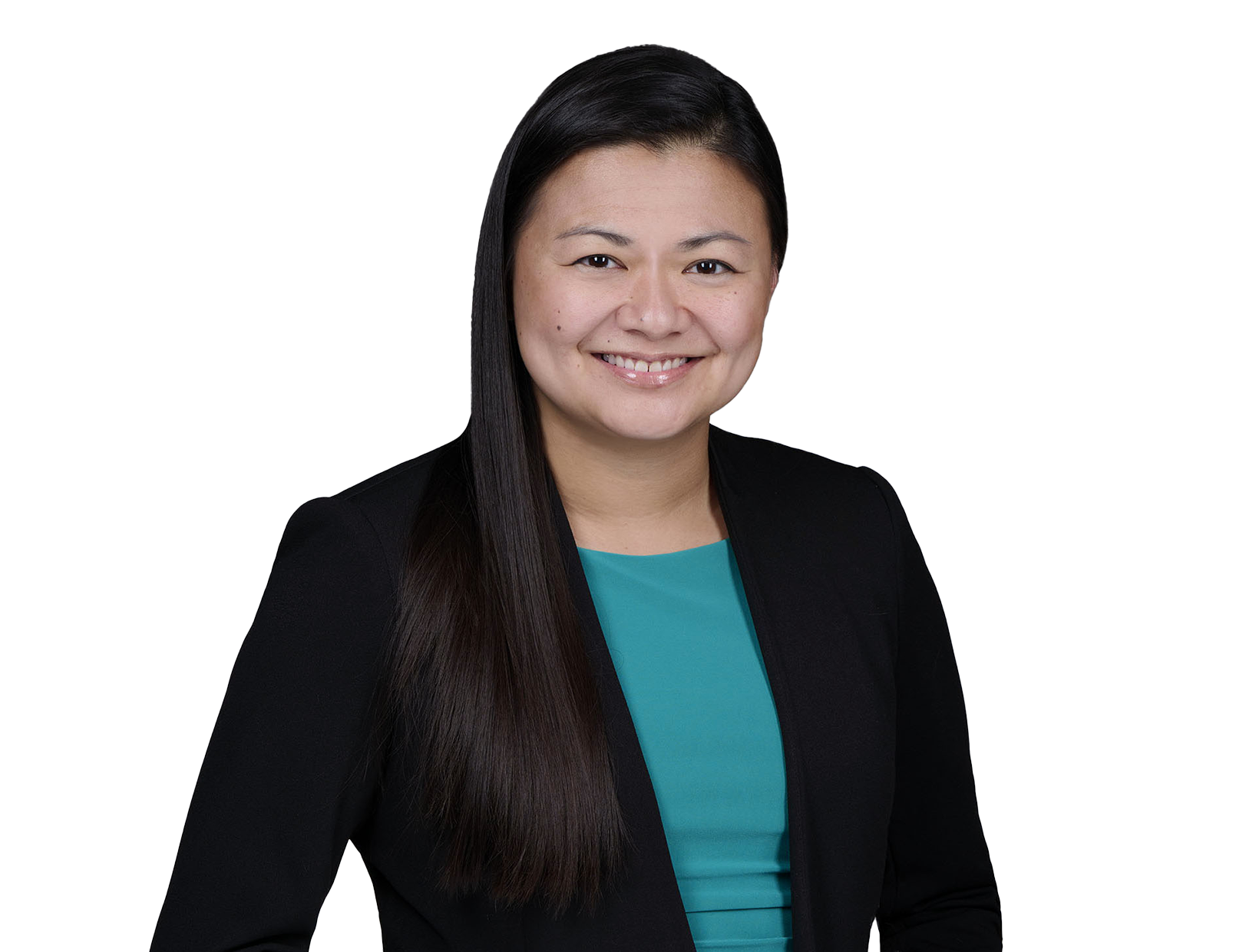Blog
The Most Interesting Appellate Cases of 2024
Fish & Richardson
Authors
-
- Name
- Person title
- Principal

-
- Name
- Person title
- Principal

-
- Name
- Person title
- Principal

-
- Name
- Person title
- Principal

-
- Name
- Person title
- Associate

-
- Name
- Person title
- Associate

-
- Name
- Person title
- Associate

-
- Name
- Person title
- Associate

-
- Name
- Person title
- Associate

Appellate courts issued a variety of notable intellectual property (IP) cases in 2024, including cases touching on Orange Book listings, extraterritoriality, willful infringement, design patent obviousness, and public disclosure, just to name a few. While it would be impossible to cover them all, below are some of the cases we found the most interesting over the past year. These cases not only reflect the evolving nature of IP law but also provide valuable insights for patent owners and IP professionals alike.
In Brumfield, Trustee for Ascent Trust v. IBG LLC, No. 2022-1630 (Fed. Cir. Mar. 27, 2024), the Federal Circuit opened the door to foreign damages proximately caused by domestic infringement.
As a brief history leading up to the Brumfield decision, in 2013, the Federal Circuit pronounced that U.S. patent laws “do not . . . provide compensation for a defendant's foreign exploitation of a patented invention, which is not infringement at all.” Power Integrations, Inc. v. Fairchild Semiconductor Int’l, Inc., 711 F.3d 1348, 1371 (Fed. Cir. 2013). Five years later, the Supreme Court reversed course by holding that a patentee may recover lost foreign profits (i.e., profits that would have been earned from lost foreign surveying contracts) resulting from a competitor’s infringement under § 271(f)(2) (namely, exporting especially made components of a patented invention for assembly overseas). WesternGeco LLC v. ION Geophysical Corp., 585 U.S. 407, 409 (2018). The Supreme Court reached this conclusion after applying its framework for determining whether a statute applies extraterritorially.
In Brumfield, the Federal Circuit held that the Supreme Court’s extraterritoriality analysis in WesternGeco is not limited to the scenario of infringement under § 271(f)(2) or lost profit damages calculations; instead, it also applies in cases involving direct infringement under § 271(a) and reasonable royalty damages models. In doing so, it seemingly opened the door for foreign conduct to influence run-of-the-mill patent damages calculations. The court suggested that one possible limitation on foreign damages is proximate causation and noted that questions continue to loom — for resolution in future cases — concerning “when foreign conduct can properly play a role in calculating patent damages.”
Despite this theoretical expansion of foreign conduct’s impact on damages calculations, the court held that, here, the plaintiff’s damages expert failed to establish the required causal relationship between the infringement and the foreign conduct for which recovery was sought and thus affirmed the district court’s exclusion of the expert’s theory from trial. As to the infringement, the expert pointed to “making the accused product.” That type of infringement simply did not apply to the asserted method claims, the court explained, given that methods are not made. Nor did it apply to the other type of asserted claims, which covered computer readable mediums, given that the plaintiff’s damages theory focused on the “making” of software detached from any medium.
In sum, Brumfield theoretically expands damages law to permit recovery for foreign damages caused by infringement but leaves to future cases the proper influence of foreign conduct on damages calculations.
The Federal Circuit overruled the Rosen-Durling obviousness test for design patents in LKQ Corp. et al. v. GM Global Tech. Operations LLC, No. 2021-2348 (Fed. Cir. May 21, 2024).
Sitting en banc, the court overruled the long-standing Rosen-Durling framework for assessing design patent obviousness. The case arose from an inter partes review that LKQ filed against one of GM’s fender design patents, and the Patent Trial and Appeal Board’s (PTAB) conclusion that LKQ failed to prove obviousness under the longstanding Rosen-Durling framework.
Under the Rosen-Durling framework, a patent challenger had to first find a single reference with design characteristics that are “basically the same as the claimed design” — commonly referred to as a Rosen reference. The challenger could use other prior art to modify the Rosen primary reference if the secondary reference was “so related [to the primary reference] that the appearance of certain ornamental features in one would suggest the application of those features to the other.” The PTAB determined that LKQ failed to identify a proper Rosen reference, and so found that LKQ had failed to prove obviousness.
After the Federal Circuit panel affirmed the PTAB’s decision, the full court granted LKQ’s request for rehearing. Siting en banc, the court overruled Rosen-Durling and adopted a “more flexible approach.” While no longer requiring a Rosen reference, the Federal Circuit held that there must still be a primary reference “in existence” that is analogous art to the claimed design. If a challenger uses secondary references to modify the primary reference, “there must be some record-supported reason (without hindsight) that an ordinary designer in the field” would have made the claimed modifications. Finally, the court held that the obviousness inquiry for design patents still requires assessment of objective factors of nonobviousness.
Judge Lourie, concurring in the judgment, agreed with the court’s decision to vacate and remand, but would have clarified the Rosen-Durling test rather than overrule it.
In Amarin Pharma, Inc. v. Hikma Pharmaceuticals USA Inc., No. 2023-1169 (Fed. Cir. Jun. 25, 2024), a non-Hatch-Waxman skinny label case, the Federal Circuit held that the combination of a generic manufacturer’s label and its public statements could plausibly induce infringement.
The Federal Circuit reversed a district court's dismissal under Federal Rule of Civil Procedure 12(b)(6) of Amarin's induced infringement claims against Hikma. Amarin's Vascepa® was approved for two indications, while Hikma's generic product was indicated for only one use under a skinny label carve-out pursuant to 21 U.S.C. § 355(j)(2)(A)(viii). Amarin contended that the combination of Hikma's label, which did not include a standard limitation of use, and Hikma's press releases and website, which referred to its product as a generic version of Vascepa®, encouraged non-indicated use of Hikma’s products, thus inducing infringement of Amarin’s method patents for the other Vascepa® indication. The court determined that Hikma’s label and its other public statements, taken together, were enough to plausibly allege induced infringement.
The court emphasized two key reasons for its ruling. First, it found that the question of how the combination of Hikma’s label and public statements would be interpreted by physicians and patients was a question of fact and thus not appropriate for a motion to dismiss. Second, the case was not brought under the Hatch-Waxman Act, but rather brought after Hikma launched its generic product, making it a “run-of-the-mill induced infringement case.” The court acknowledged that Hikma’s label alone did not recommend, encourage, or promote an infringing use. By not using the Hatch-Waxman avenue, however, Amarin was able to point to statements beyond Hikma’s label in alleging induced infringement.
The court was unpersuaded by Hikma’s concerns that its ruling could “eviscerate section viii carve-outs.” It noted that “clarity and consistency in a generic manufacturer’s communications regarding a drug marketed under a skinny label may be essential in avoiding liability for induced infringement.” Nevertheless, the ruling might impact generic manufacturers’ calculus in pursuing skinny label carve-outs and could provide name-brand manufacturers with new strategies in bringing suit against skinny labels. The ruling may also have been driven in part by the early stage of the litigation, such that clarifying decisions will be required in the future.
In Sanho Corp. v. Kaijet Technology International Limited, Inc., No. 2023-1336 (Fed. Cir. Jul. 31, 2024), the Federal Circuit clarified the scope of what constitutes a public disclosure under the prior art exception in 35 U.S.C. § 102(b)(2)(B).
The Federal Circuit agreed with the PTAB’s conclusion that an inventor’s private but non-confidential sale of a device allegedly embodying the claimed invention did not amount to a public disclosure triggering the prior art exception in § 102(b)(2)(B). Disclosures falling under the “publicly disclosed” language in § 102(b)(2)(B), the Federal Circuit reasoned, are not coextensive with disclosures falling under the “on sale” or “public use” bars of § 102(a)(1). Instead, in the Federal Circuit’s view, the phrase “publicly disclosed by the inventor” in § 102(b)(2)(B) “must mean that it is reasonable to conclude that the invention was made available to the public.”
This decision in one sense confirms the gold standard: A patent application should be filed before any disclosure. But pre-filing disclosures are common. Inventors and prospective applicants may disclose parts of their inventions by, for example, publishing articles, disseminating marketing materials, presenting papers at conferences, or making commercial sales (as the inventor did in Sanho). Patent practitioners typically take note of these disclosures to ensure an application is filed before the one-year grace period under § 102(b)(1)(A) elapses. But, as Sanho highlights, such disclosures could also be used defensively to disqualify prior art under § 102(b)(1)(B) and § 102(b)(2)(B).
Although the Sanho decision ostensibly limits the scope of these exceptions, it clarifies the relevant facts. Thus, when patent practitioners query inventors on pre-filing disclosures, in addition to considering the possibility that such disclosures become prior art under § 102(a)(1), they should consider whether the disclosure could be used to disqualify prior art that appears after the disclosure but before the application filing. To do so, practitioners should take stock of the facts surrounding the disclosure that may be relevant to public accessibility to the disclosed subject matter, such as who was present at the disclosure, what was disclosed, how it was disclosed, and where it was disclosed.
The Federal Circuit clarified the scope of obviousness-type double patenting references in Allergan USA Inc. v. MSN Laboratories Private Ltd., No. 2024-1061 (Fed. Cir. Aug. 13, 2024).
The Federal Circuit reversed a district court’s judgment that invalidated Allergan’s patents. The case involved patents covering eluxadoline, marketed as Viberzi®, which treats irritable bowel syndrome. The district court had found that claim 40 of U.S. Patent 7,741,356 (’356 patent) was invalid due to obviousness-type double patenting (ODP). The ’356 patent was Allergan’s first patent covering eluxadoline and was filed in 2005. As a result of patent term adjustment (PTA), the ’356 patent will expire in 2026. Allergan filed continuation applications that claim priority to the 2005 filing date. Those continuations did not receive PTA, so both will expire after the 20-year statutory term in 2025. But for the PTA awarded to the ’356 patent, it would have expired on the same day as the two continuation patents.
The court held that a first-filed, first-issued patent could not be invalidated by later-filed, later-issued patents with earlier expiration dates, reasoning that it would be antithetical to the principles of ODP to find that the first-filed ’356 patent improperly extends Allergan’s exclusivity period.
Allergan has important implications for patent prosecution strategy. A parent application — the first in the patent family tree — will generally set the limit for the exclusivity period for the subject matter claimed therein that might be recited in any continuation patent. Allergan also solidifies the value of PTA for parent patents.
In Hachette Book Group, Inc. v. Internet Archive, No. 23-1260 (2d Cir. Sep. 4, 2024), the Second Circuit affirmed the importance of transformativeness in the fair use analysis and unequivocally held that merely digitizing a copyrighted work, without more, is insufficiently transformative to constitute fair use.
Defendant Internet Archive (“IA”) maintains what it calls a “Free Digital Library.” To stock its digital shelves, IA acquires print books, scans and digitizes said books, and posts the digital copies on its website, where users may access them in full and for free. Prior to 2020, IA would only loan out as many digital copies of a book as it had physical copies. But in response to school and library closures during the COVID-19 pandemic, IA rolled out its “National Emergency Library” and repealed its one-to-one owned-to-loaned policy — all without the permission of copyright holders.
In June 2020, four major book publishers sued IA alleging copyright infringement of 127 fiction and non-fiction books on IA's digital shelves. After extensive discovery, both parties moved for summary judgement. The district court, rejecting IA's fair use defense, granted summary judgement to the publishers and entered a permanent injunction against the (once) Free Digital Library.
The court unanimously affirmed: IA’s Free Digital Library is not fair use. The court discussed the inherent tension between a copyright holder’s right to prepare derivative works and the public’s right to fair use, as well as the role of the transformativeness analysis in maintaining a balance between the two. Too broad a concept of transformative use “would significantly narrow — if not entirely eviscerate — copyright owners’ exclusive right to prepare (or not prepare) derivative works.” Copyright law must protect an author’s ability to repackage and republish its work for new audiences.
The court held IA’s digital books were not transformative because they did not add something new or serve a new purpose. By merely digitizing print books, IA was simply repackaging and republishing copyrighted works — a right that belongs solely to the copyright holder. In fact, IA’s digital books directly compete with the e-book market for the copyright holders’ works.
This much-anticipated case explores how the post-Warhol doctrine of fair use distinguishes between derivative and transformative use. As the Supreme Court did in Warhol, Hachette signals a stronger respect for the rights of copyright holders, particularly the right to prepare (or not prepare) derivative works.
In Provisur Techs., Inc. v. Weber, Inc., No. 2023-1438 (Fed. Cir. Oct. 2, 2024), the Federal Circuit held that willfulness requires evidence of the accused infringer’s specific intent to infringe.
Provisur won a jury verdict that Weber had willfully infringed certain claims of three patents that generally relate to food processing machinery. To prove Weber’s willful infringement, Provisur presented testimony of an expert witness who explained that Weber had maintained a “patent matrix that tracked patents in related food processing technologies, including the asserted patents.” Weber’s patent matrix contained a rating (out of three) for each patent, indicating “whether the patent was relevant for purposes of further evaluation.” For each of the three asserted patents, Weber had written the highest score of three in the matrix.
The court held that the evidence presented at trial failed as a matter of law to support the jury’s willfulness finding. “At most, the patent matrix demonstrates Weber's knowledge of the asserted patents and their relevance to Weber's business in general.” However, the court explained, “[t]he issue here is whether Weber knew of its alleged infringement and had a specific intent to infringe,” or in other words, whether Weber engaged in “deliberate or intentional infringement.” According to the court, no substantial evidence to that effect existed.
The Federal Circuit in Telefonaktiebolaget LM Ericsson v. Lenovo (United States), Inc., No. 2024-1515 (Fed. Cir. Oct. 24, 2024), held that an anti-suit injunction does not require a domestic suit involving standard essential patents to resolve all issues litigated in related foreign proceedings.
The court provided clarity on whether anti-suit injunctions are available when identical parties are engaged in overlapping standard essential patent (SEP) litigation in foreign jurisdictions. An anti-suit injunction is a court order requiring a party either not to file a claim in a foreign jurisdiction or not to proceed with a claim that has already been filed abroad. This decision opens an avenue for implementers to prevent SEP holders from enforcing a foreign court’s injunction in co-pending U.S. litigation and may lead to an uptick in anti-suit injunction requests.
Lenovo sought an anti-suit injunction to prohibit Ericsson from enforcing preliminary injunctions issued by Brazilian and Colombian courts, which the district court denied. On appeal, the court applied the Ninth Circuit’s framework from Microsoft Corp. v. Motorola, Inc., 696 F.3d 872 (9th Cir. 2012), to vacate and remand the issue. The court held that a domestic suit potentially resolving certain issues relating to a foreign court’s injunction — but not every litigated issue — may be sufficient to meet the “threshold” requirement for an anti-suit injunction under the Microsoft v. Motorola framework. Disagreeing with the district court’s finding that the domestic suit was not dispositive of the foreign actions, the court found that the domestic suit needed to determine only one issue — whether Ericsson’s offer to license its SEPs was fair, reasonable, and non-discriminatory (FRAND) — for Lenovo to seek an anti-suit injunction. The district court’s FRAND determination would indicate whether Ericsson was permitted to seek injunctions in Brazil and Colombia in the first instance. Thus, Lenovo was not precluded from seeking an anti-suit injunction even if the domestic suit did not adjudicate other outstanding issues (such as infringement).
This decision may impact domestic litigation strategies for implementers and SEP holders involved in multijurisdictional SEP disputes. Practitioners should be on the lookout for further developments on whether Lenovo ultimately secures an anti-suit injunction in the Eastern District of North Carolina.
In CloudofChange, LLC v. NCR Corp., No. 2023-1111 (Fed. Cir. Dec. 18, 2024), the Federal Circuit addressed divided infringement for system claims, including whether an accused infringer can be liable for end-users’ use of the claimed system.
This decision generally highlights the well-known perils of system claims that recite both front-end devices (typically under the control of end-users) and back-end servers (typically under the control of service providers) and the difficulty in showing that service providers are liable for infringement of such claims.
First, the court agreed with the district court’s determination that end-users, not the accused infringer, directly infringed the asserted system claims because the end-users put the accused system to use and received the benefit (i.e., the purpose or result recited in the claim itself) of that use. According to the court, benefits to the accused infringer situated outside the claim language — such as monetary or reputational benefits — were not the focus of the inquiry for determining whether the accused infringer used, and hence directly infringed, the system claims. Second, the court reversed the district court’s determination that the accused infringer was vicariously liable for the end-users’ direct infringement. In the court’s view, the district court erroneously focused on the accused infringer’s direction and control of the end-users with respect to a single claim element of the asserted system claims and instead should have analyzed whether the accused infringer directed or controlled its end-users’ actions in putting the entirety of the claimed system into use.
The Federal Circuit clarified the proper scope of Orange Book-listable patents in Teva v. Amneal, No. 2024-1936, 2024 (Fed. Cir. Dec. 20, 2024).
The Federal Circuit affirmed a district court’s order requiring Teva to delist certain patents from the Food and Drug Administration’s Orange Book. The patents relate to device components of Teva’s ProAir® HFA Inhalation Aerosol inhaler. The court held that patents listed in the Orange Book must include claims that cover the active ingredient by, for example, claiming the active ingredient itself, claiming formulations containing the active ingredient, or claiming methods of using the active ingredient. Because the challenged patents covered only components of an inhaler device, the court held they were not properly listed in the Orange Book. In January 2025, the court stayed its order to delist the patents at issue pending the resolution of Teva’s petition for rehearing en banc.
The decision has implications for both branded and generic pharmaceutical companies. For branded companies, it is a reminder to carefully review Orange Book-listed patents to confirm they specifically cover the active ingredient. For generic companies, the decision provides a potential avenue to challenge patents that may delay market entry.
The opinions expressed are those of the authors on the date noted above and do not necessarily reflect the views of Fish & Richardson P.C., any other of its lawyers, its clients, or any of its or their respective affiliates. This post is for general information purposes only and is not intended to be and should not be taken as legal advice. No attorney-client relationship is formed.